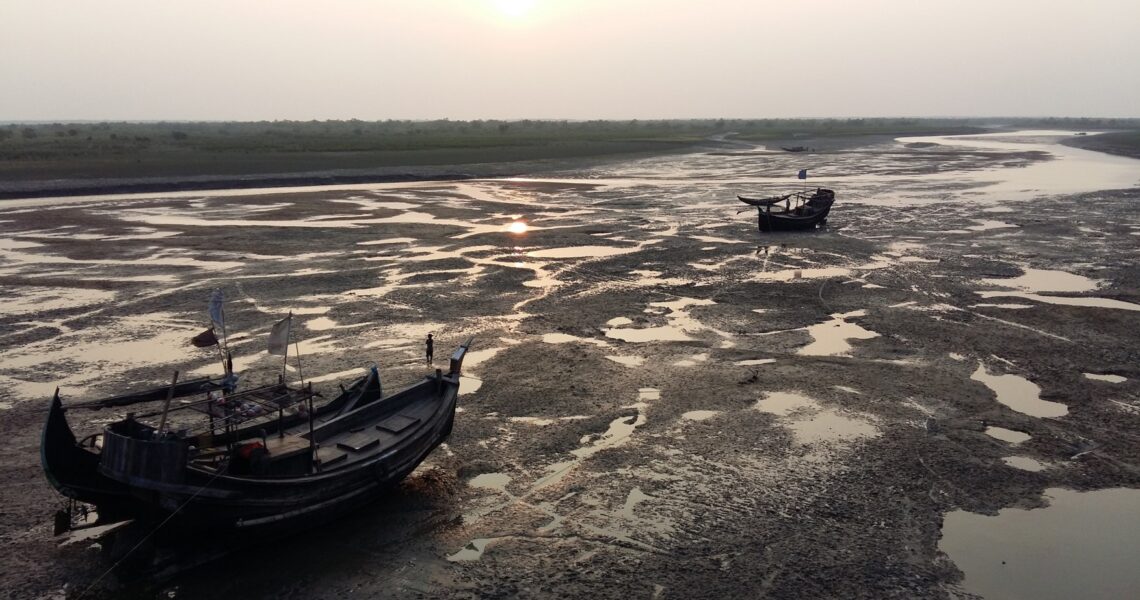Organised as a three-week-long program, the objective of the September session was to better understand the relationship between architecture and landscape with particular attention to practices in Bangladesh. Jalal Ahmad, Salauddin Ahmed, Rafiq Azam, Kazi Khaleed Ashraf, Iqbal Habib, Saif Ul Haque, Khondaker Hasibul Kabir, Nahas Khalil, Ehsan Khan and Marina Tabassum were part of the faculty-lineup.
The session also included seminars with Lyndon Neri and Rossana Hu, founders of one of the prominent architectural practices in Asia – Neri & Hu Design and Research Office, based in Shanghai, China. A screening of the critically acclaimed documentary Shunte Ki Pao was arranged to help understand the challenging relationship that the dwellers have with the landscape of Bangladesh. The session concluded with a forum that included Jalal Ahmad, Salauddin Ahmed, Rafiq Azam, Iqbal Habib, Saif Ul Haque, Ehsan Khan and Marina Tabassum, while Kazi Khaleed Ashraf moderated the event. Considering the significance of landscapes and habitats, the forum discussed how architects can moderate the relationship between architecture and landscape.

Image: Bengal Institute
Bangladesh hosts one of the most unique and demanding landscapes in the world. The geographic location and biodiversity make dwelling here a special kind of challenge.
Many architects here have made efforts to develop their works in the parameters of this landscape, or think through those conditions. Jalal Ahmad, Salauddin Ahmed, Rafiq Azam, Iqbal Habib, Saif Ul Haque, Ehsan Khan and Marina Tabassum are some of the most prominent among them, who also shared their wisdom with the participants of Bengal Institute as part of the September 2016 Session.
According to Kazi Khaleed Ashraf, the fundamentals of landscape design are topography, climate and gravity. He believes that architecture is a “landscape event,” in which architecture is intimately intertwined with the topographic and ambient reality of a place no matter how it appears. He argued that the human body is the epicentre of both understanding and experiencing the landscape, and cited the organization of Geoffrey Bawa’s Lunuganga as an example that demonstrates this.
Khondaker Hasibul Kabir listed the ways of finding forms and fabrics of architecture in a place as the following: spaces, paths, edges, threshold, foci and detail. In order to understand the landscape better, one has to consider the identity of a particular place and design by involving its people. To work with the landscape seamlessly, Kabir believes it is important to build trust between humans and animals.

Ehsan Khan presented some remarkable projects representing “architecture in the landscape,” including the Nishorgo Nature Interpretation Centre. He mentioned the building was conceptualized to be like a floating deck. The building was designed in a way that it could withstand the climate and weather of all districts. The design team’s main goal was to keep nature as undisturbed as possible. Material selection was also done carefully, in which concrete was chosen as part of the process. The material contradicts nature and was a challenge to work with, but in a long run, it will prove to be durable.
Nahas Khalil discussed the role of architecture in the deltaic landscape. Much of our problems can be solved, if there were “waterfront properties” – that is, development that bore value to being near the water — in both cities and rural areas. He thinks our mindset regarding planning and designing has been corrupted; we have lost sight of what the definition of urban and rural should be. Planning should be thinking ahead of the problem. Instead, planning is considered as troubleshooting.
Saif Ul Haque believes that architecture is connected to change, and architects are the ones who articulate and bring in change. He mentioned that the basic setting of the connection between roadside house, nature and humans in Bengal has remained unchanged over the last 100 years, despite all the advancements since then. He believes houses must be built in a way that it does not obstruct the path of sunlight in one’s neighbouring houses. He deplores doing environmental damage by importing expensive ‘cladding materials’ that need to be shipped from abroad by burning fuel.

3. Residence by Shatotto 4. Suborno Dighi by J.A. Architects Ltd. 5. Nishorgo Nature Interpretation Centre by Vitti Sthapati Brindo Ltd. 6. Training and Resource Centre of BARC at Faridpur by Diagram Architects.
Salauddin Ahmed talked about the five views on matters important to him and his architecture practice.
The five points are:
- Paradox
- Denial versus acceptance
- Concept vs criterion
- Tactility and memory
- Observation and interpretation

To understand landscape design solutions in urban context, Salauddin Ahmed invited participants of the September session to visit a residence in Gulshan designed by him. He showed the participants the circulation loop of the residence and how he utilised the terraces to the full extent by planting trees and inviting natural light and ventilation inside.
Iqbal Habib of Vitti Sthapati Brindo, presented some signature works, focusing on large scale urban interventions and water urbanism. He discussed the following factors coupling architecture and landscape:
- Beholding the nature instead of interpreting it.
- Phenomenology of landscape (site, context etc.).
- Responsiveness towards natural catalysts.
- Human content – democratisation of space.
- Need of special groups – prioritising minority groups like children, women, older citizens and differently abled people.
He defined ‘water urbanism’ as a place for public euphoria with ample visual and physical attainment all day and night, with access to both water and land. He said edge was something which defined the relationship between water and land.
Bangladesh has lots of distinctive and diverse landscapes. Some of that diversity is reflected in many of the works by Jalal Ahmad. The relationship between natural elements like land and water and built-forms was discussed. An example of that relationship was TARC in Faridpur and in Bogra—where only the mound below the building was raised, the rest of the area was left undisturbed.
He also talked about his project for supporting communities affected by river erosion in Gaibandha. He mentioned some specific features of each village he worked in. In the Village 1 in Uria, the courtyard was fully utilised. All cowsheds were placed near the edge of the pond so that the waste can be disposed of easily. In Village 2 in Paschim Belkar Char, cow sheds were placed near the houses so that the animals don’t get purloined by robbers at night. He involved everyone in the community by engaging unskilled labour with cutting land and by involving skilled labour with building houses.
Fuad Quaium talked about the various ecological conditions in different parts of Bangladesh. He mentioned the concept of ecotone, a transition area between two biomes. Sal trees are an example of that. He also talked about the importance of working with landscape by keeping the history of nature in mind. When designing landscape, one must keep in mind that without planting trees, one cannot bring in water. If a forest is cleared water cannot reach that area, resulting in ruins of the biodiversity of that place. Deforestation is causing water scarcity in hilly areas. The cutting off of trees causes drying up of the rivers, that in turn causes destruction of the topsoil leading to lesser possibility of cultivation.
Marina Tabassum does not see architecture and landscape as two different entities. She is interested in seeing how to make a space breathe. The first act of landscaping for her is putting an object on site, a space that is not just the architect’s boundary but one that starts getting bigger till it is beyond time. The next issue is how the built form engages with the land. Another act of landscape is how one addresses nature with architecture; and it is simply not about placing trees or vegetating certain patches of land. Understanding how various elements work with one another is how the architect sees the act of landscape. When an object stands three dimensionally, it must radiate attention outside of its boundary line, and it must engage with its surroundings like roads, neighbourhood buildings and boundary lines.
Rafiq Azam believes that working with landscape in a dense fabric like Dhaka is quite different from working near the ocean like Geoffrey Bawa had done. He mentioned how he creates abstractions and an overall surreal effect by placing ponds and boats in houses, which is unheard of in urban cities. He was told by artist Mustafa Monowar that architecture is like watercolour. The colour seeps through and makes the paper visible at one point. Just like paper is the base for watercolour, the ground is the base for architecture and the connection with the ground must be evident. However, the architect himself believes that architecture can be different from that ideology too; it is not like a prescription that must be followed.

